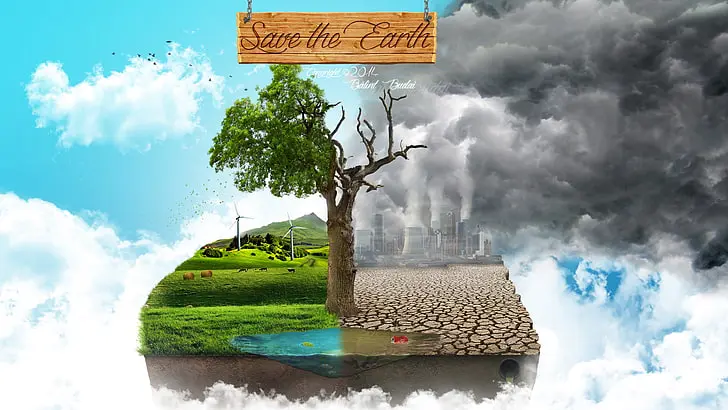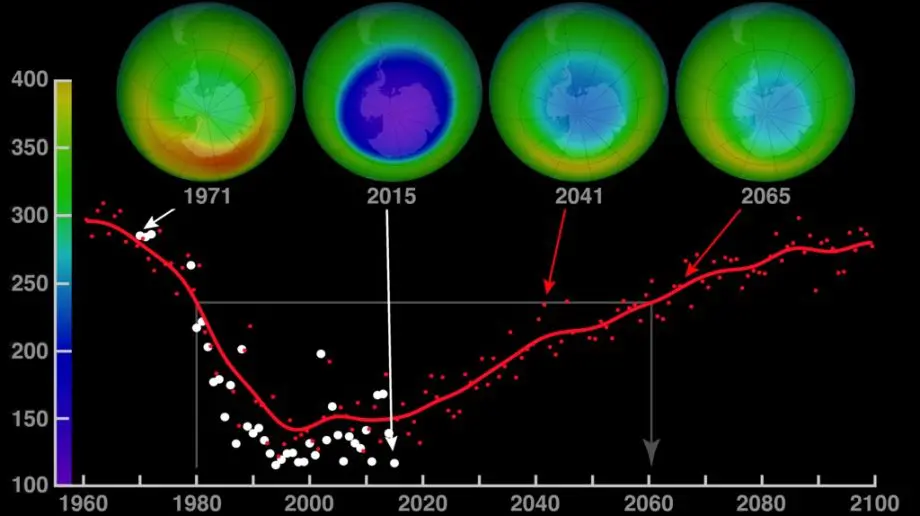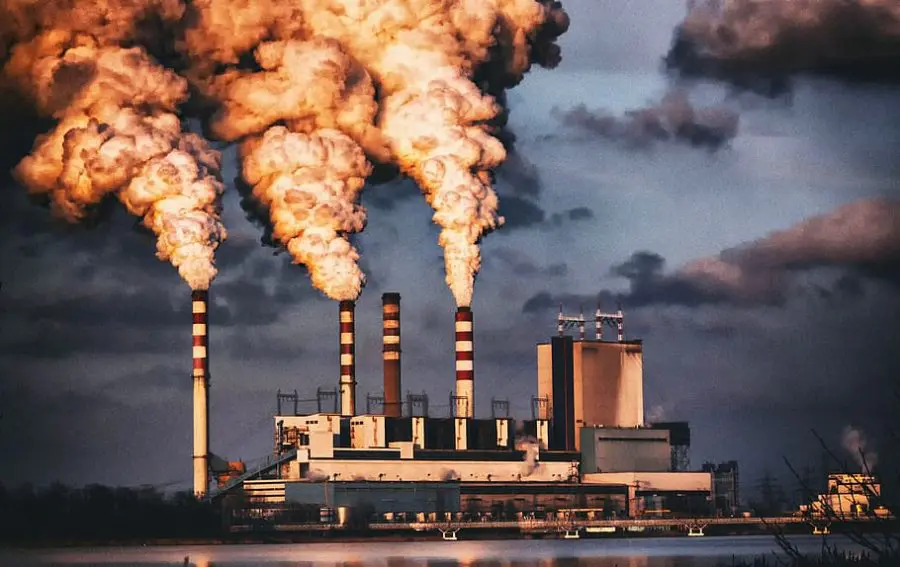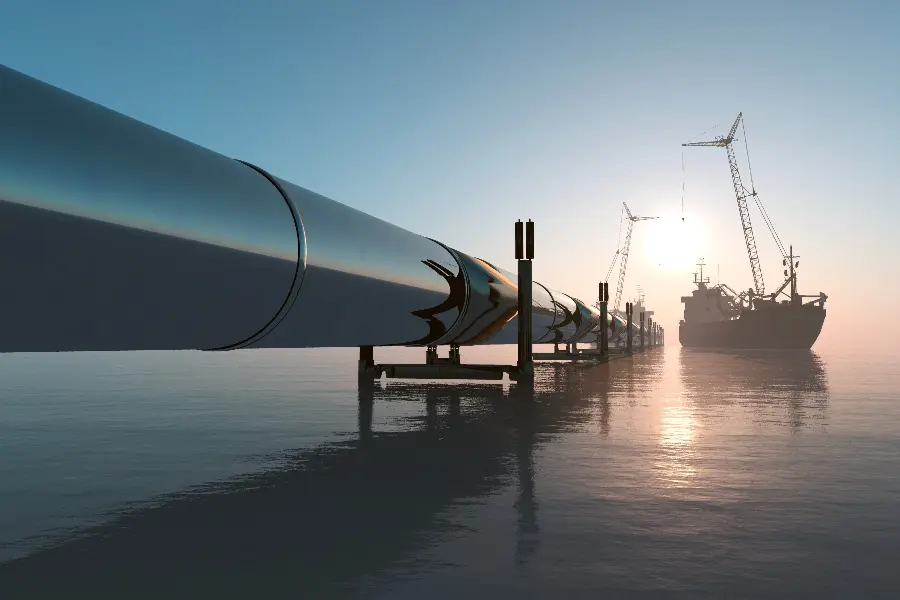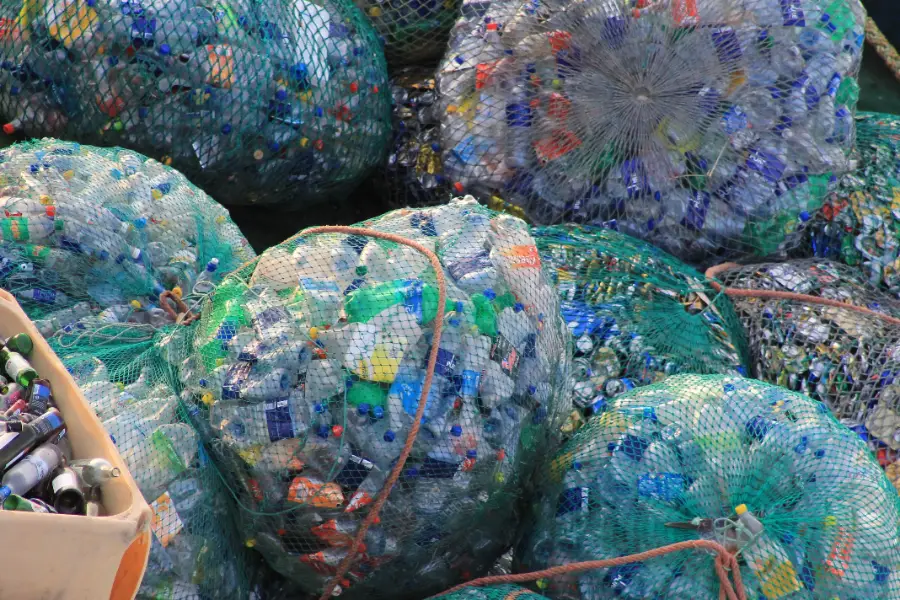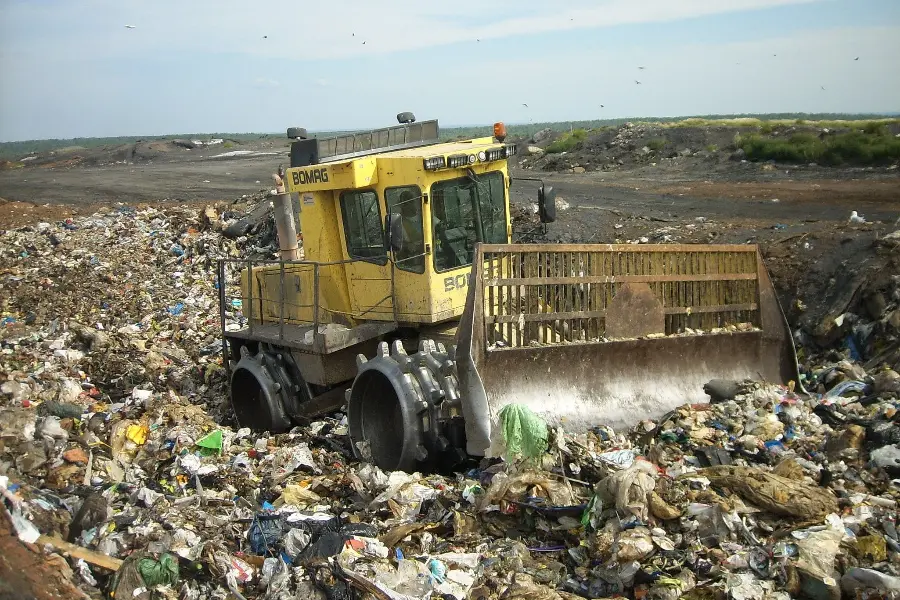
How do landfills contribute to global warming? Let’s discover their impact on global warming and learn how we can mitigate their effects and make a difference!
How do landfills contribute to global warming? It’s a question that’s been buzzing around lately and for good reason.
As we sip our morning coffee and sort through our daily waste, it’s easy to overlook the journey our trash takes after we toss it into the bin.
But here’s the thing our everyday waste in the United States has a bigger role in the story of global warming than you might think.
As a kid growing up in New York, I remember seeing garbage trucks picking up trash every day.
I never once thought about where landfill waste went, landfill operators or the carbon emissions or even waste as a significant source of methane emissions it produced, or the global warming it caused until years later.
Global warming was not even a word back then. But times change.
So, let’s dive in and explore this together, shall we?
How Do Landfills Contribute To Global Warming?
Have you ever wondered do landfills contribute to global warming? It’s a topic that might not cross our minds as we go about our daily routines.
Yet, it’s a conversation we need to have, considering the significant role our discarded waste plays in the larger narrative of climate change.
In this post, we’ll pull back the curtain on the world of landfills, their workings, and the types of waste they house.
We’ll delve into the nitty-gritty of greenhouse gas emissions from these sites and their impact on our climate.
Lastly, we’ll explore some solutions to mitigate these effects. So, let’s embark on this enlightening journey together, shall we?
Brief Overview of Global Warming
Let’s start at the beginning, shall we? Global warming is a term we’ve all heard, but what does it really mean?
Simply put, global warming is the long-term increase in Earth’s average temperature.
It’s like Earth is slowly getting a fever, and this fever is caused by an excess of greenhouse gases in our atmosphere.
These gases trap heat from the sun, causing our planet to warm up over time.
The consequences? Rising sea levels, more intense weather events, and disruptions to ecosystems and agriculture.
It’s a complex issue, but one that we all play a part in.
Role of Landfills in Global Warming
Now, you might be wondering, what do our trash and landfills have to do with all this? Well, quite a lot, actually.
When we toss out our garbage, it often ends up in landfills. These are designated areas where waste is managed and stored.
But here’s the kicker, as the waste in landfills breaks down, it releases greenhouse gases, particularly methane, which is 25 times more potent at trapping heat than carbon dioxide.
So, our everyday waste contributes to the ‘fever’ our Earth is experiencing.
In the following sections, we’ll dive deeper into this process and discuss ways we can lessen our impact.
Stick around, it’s going to be an enlightening ride!
Understanding Landfills
Alright, now that we’ve set the stage with a bit of background on global warming, let’s turn our attention to landfills.
You might be thinking, it’s just a pile of garbage, right?’ Well, there’s more to it than meets the eye.
Landfills are a crucial part of our waste management system, and understanding how they work is key to grasping their role in global warming.
So, let’s roll up our sleeves and dive into the world of landfills, exploring what they are, how they operate, and the types of waste they contain.
What are Landfills?
So, what exactly are landfills? Picture a giant pit. Now, imagine filling that pit with layers of trash and soil, one on top of the other.
That’s essentially what a landfill is, a designated area where our waste is sent to be managed and stored.
But it’s not just a simple dump. Modern landfills are carefully designed and monitored to minimize environmental impact.
They’re lined with protective layers to prevent leakage, and they’re capped off when they’re full to keep everything in their waste stream contained.
They’re like the final resting place for our waste, but as we’ll see, there’s a lot happening beneath the surface.
According to the U.S. Environmental Protection Agency: Modern landfills are well-engineered facilities designed to receive specific kinds of waste, including municipal solid waste (MSW), construction and demolition debris (C&D) and hazardous waste. Landfill facilities must be designed to protect the environment from contaminants, which may be present in the solid waste disposed in the unit.
How do Landfills Work?
Now, let’s talk about how landfills work. It’s not just about piling up trash.
When waste arrives at landfill sites, it’s compacted and covered with a layer of soil.
This process is repeated, creating layers of waste and soil. As the waste decomposes, it produces landfill gas, a mix of carbon dioxide, methane, and other greenhouse gas emissions.
This GHG emissions gas is collected through a series of pipes and can be used for energy or flared off.
Meanwhile, any liquid produced in the landfill, known as leachate, is collected and treated to prevent contamination of groundwater.
It’s a complex system, but it’s all designed to manage our waste as safely and efficiently as possible.
Types of Waste in Landfills
So, what kind of waste ends up in landfills?
Well, it’s a mix of just about everything, from household trash like food waste and packaging, to construction debris, to industrial waste.
Some of this waste, like organic materials and yard waste, breaks down over time, while other items, like plastic, can take hundreds of years to decompose.
And as this waste breaks down, it contributes to the production of landfill gas, which, as we’ve discussed, plays a significant role in global warming.
In the next section, we’ll delve deeper into this process and its implications. Stay tuned!
Landfills and Greenhouse Gas Emissions
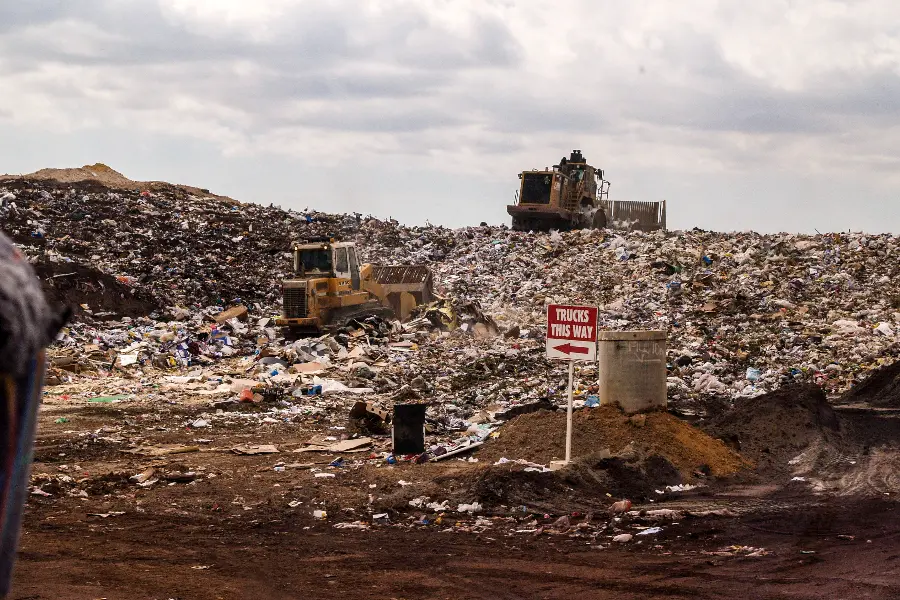
Now that we’ve got a handle on what landfills are and how they work, let’s delve into the heart of the matter the greenhouse gas emissions from landfills.
It’s a topic that’s not only fascinating but also incredibly important in our discussion about global warming.
We’ll be exploring the types of gases that landfills emit, focusing on methane and carbon dioxide, and we’ll also touch on other greenhouse gases.
It’s a bit like a detective story, tracing these invisible culprits from our trash to the atmosphere. So, are you ready to play detective? Let’s get started!
Methane Emissions from Landfills
First on our detective’s list is methane. Now, methane might not be as famous as its cousin, carbon dioxide, but when it comes to global warming, it’s a major player.
You see, when organic waste in landfills decomposes, it does so in an oxygen-free environment. It breaks down under anaerobic conditions (without oxygen). This process, known as anaerobic decomposition, produces landfill gas, which is about 50% methane.
And here’s the kicker, methane is 25 times more potent at trapping heat in our atmosphere than carbon dioxide.
So, even though the volume of methane might be less, the impact of landfill methane emissions on global warming is significant.
Carbon Dioxide Emissions from Landfills
Next up, we have carbon dioxide. While it’s not as potent as methane, it’s still a key contributor to global warming.
Carbon dioxide is also produced during the decomposition of organic matter, making up about 50% of landfill gas.
But that’s not all. The equipment used to manage landfills, like trucks and compactors, also emit carbon dioxide when they burn fossil fuels.
So, it’s a double whammy of emissions from both the decomposition process and landfill operations.
Other Greenhouse Gases from Landfills
While methane and carbon dioxide are the main greenhouse gases produced by landfills, they’re not the only ones.
Landfill gas also contains small amounts of other gases, like nitrogen, oxygen, and trace amounts of volatile organic compounds.
While these gases are present in smaller quantities, they can still contribute to air pollution and global warming.
Plus, when landfill gas is burned off, or ‘flared’, it can produce additional pollutants.
So, it’s clear that landfills have a complex relationship with our atmosphere and climate.
But don’t worry, in the next section, we’ll explore how we can mitigate these impacts. Stay tuned!
The Impact of Landfill Emissions on Climate Change
Having explored the ins and outs of landfills and their emissions, it’s time to connect the dots and look at the bigger picture.
How do these emissions from our everyday waste impact our climate? It’s a question that takes us to the heart of the global warming conversation.
In this section, we’ll delve into the effects of landfill emissions on both local and global climates.
It’s a journey that will take us from the humble landfill to the vast expanse of our planet’s atmosphere. So, buckle up, and let’s dive in!
How Landfill Emissions Contribute to Global Warming
Let’s start by understanding how landfill emissions contribute to global warming.
Remember the methane and carbon dioxide we talked about? When these gases are released from landfills, they rise and mix with the rest of the gases in our atmosphere.
Here, they act like a blanket, trapping heat from the sun and preventing it from escaping back into space.
This is known as the greenhouse effect, and it’s the main driver of global warming.
The more greenhouse gases we have in our atmosphere, the thicker this ‘blanket’ becomes, and the more heat gets trapped.
So, the emissions from our waste sector, while they might seem small on their own, add up and play a significant role in global warming.
The Effect of Landfill Emissions on Local and Global Climate
Now, let’s look at the effect of these emissions on our climate.
On a local level, landfill emissions can contribute to air pollution, which can impact local weather patterns and air quality.
But the effects are much broader on a global scale. The increased heat trapped by greenhouse gases leads to a rise in Earth’s average temperature, which we know as global warming.
This can lead to a host of changes, including rising sea levels, more extreme weather events, and shifts in ecosystems and agriculture.
It’s a domino effect, with our waste at the starting line and global climate change at the finish.
In the next section, we’ll explore how we can intervene in this process and mitigate the impact of landfills on global warming. Stick around!
Mitigating the Impact of Landfills on Global Warming
Alright, we’ve covered a lot of ground so far, from understanding landfills to exploring their impact on our climate.
But it’s not all doom and gloom. The good news is, there are ways we can mitigate the impact of landfills on global warming.
In this section, we’re going to explore some of these solutions, from landfill gas collection and treatment to energy projects and waste reduction strategies.
It’s all about turning a challenge into an opportunity, and I’m excited to share these possibilities with you.
So, are you ready to explore the brighter side of things? Let’s dive in!
Landfill Gas Collection and Treatment
First up, let’s talk about landfill gas collection and treatment.
Remember the methane and carbon dioxide produced by decomposing waste?
Rather than letting these gases escape into the atmosphere, many landfills now collect them using a network of pipes.
Once collected, the gas can be treated and used for various purposes, which we’ll get into in a moment.
This not only reduces greenhouse gas emissions but also helps to control odors and other local air quality issues. It’s a win-win!
Landfill Gas to Energy Projects
Now, what happens to the collected landfill gas? One exciting option is using landfill gas for energy projects. It’s a renewable natural gas in a way.
These projects take the collected gas and use it to generate electricity, heat, or fuel.
It’s a fantastic way to turn a waste product into a valuable resource.
Plus, it helps to reduce our reliance on fossil fuels, further helping to combat global warming. It’s like turning lemons into lemonade!
Reducing Waste and Promoting Recycling
Last but certainly not least, we can mitigate the impact of landfills on global warming by reducing the amount of waste we produce in the first place.
This can be as simple as choosing products with less packaging, composting our food scraps, or donating items instead of throwing them away.
And let’s not forget about recycling! By recycling materials like paper, plastic, and metal, we can keep them out of landfills and reduce the need for new materials, which often require a lot of energy to produce.
It’s all about making small changes that can add up to a big difference.
So, next time you’re about to throw something away, take a moment to consider if there’s a better option. Every little bit helps!
Do Landfills Contribute To Global Warming? FAQs
As we near the end of our journey, I’m sure you’ve got a few questions bubbling up. You’re not alone!
There are some common questions that often come up when discussing landfills and global warming.
In this section, we’ll tackle some of these FAQs head-on.
From the amount of methane produced by landfills to the potential harm of landfill gas, and ways we can reduce the impact of landfills on global warming we’ve got a lot to cover.
So, let’s dive into these questions together, shall we?
Q: How much methane do landfills produce?
A: Landfills are one of the largest sources of methane emissions, a potent greenhouse gas.
While the exact amount can vary depending on the size of the landfill and the types of waste it contains, it’s estimated that landfills account for about 15% of global methane emissions.
That’s a significant amount, considering methane’s heat-trapping potential is 25 times greater than that of carbon dioxide over a 100-year period.
Q: Can landfill gas be harmful?
A: Yes, landfill gas can be harmful. It’s a mix of different gases, including methane and carbon dioxide, as well as smaller amounts of other gases that can be harmful to human health and the environment.
If not properly managed, landfill gas can contribute to air pollution, cause explosions if it accumulates in enclosed spaces, and contribute to global warming.
Q: How can we reduce the impact of landfills on global warming?
A: There are several ways to reduce the impact of landfills on global warming.
One is through landfill gas collection and treatment, which can capture harmful gases before they’re released into the atmosphere.
Landfill gas can also be used to generate energy, reducing our reliance on fossil fuels.
On a more personal level, we can all help by reducing the amount of waste we produce, recycling whenever possible, and composting organic waste.
These actions can significantly reduce the amount of waste that ends up in landfills and, in turn, the amount of greenhouse gases they produce.
How Do Landfills Contribute To Global Warming Final Thoughts
As we wrap up our deep dive into landfills and their contribution to global warming, it’s time to take a step back and reflect on what we’ve learned.
It’s been quite a journey, hasn’t it? From understanding the workings of landfills to exploring their emissions and their impact on our climate, we’ve covered a lot of ground.
But most importantly, we’ve seen that there are solutions within our reach.
So, let’s take a moment to recap and consider the importance of mitigating the impact of landfills on global warming.
Recap of the Impact of Landfills on Global Warming
Let’s start with a quick recap. We’ve learned that landfills, while necessary for managing our waste, play a significant role in global warming.
As the waste in landfills decomposes, it releases greenhouse gases, particularly methane and carbon dioxide.
These gases rise into our atmosphere, trapping heat and contributing to the warming of our planet.
It’s a process that happens every day, all around the world, and it’s a major contributor to the climate crisis we’re facing today.
The Importance of Mitigating This Impact
Now, why is it important to mitigate this impact? Well, the answer is simple. Our planet’s health is at stake.
The more greenhouse gases we emit, the more our planet warms, leading to a host of environmental changes, from rising sea levels to more extreme weather events.
But the good news is, we have the power to make a difference. By managing our waste more effectively, reducing our waste production, and harnessing the potential of landfill gas for energy, we can lessen the impact of landfills on global warming.
It’s a challenge, no doubt, but it’s one we can tackle together. After all, every little bit helps, and every one of us has a role to play. So, let’s get to it!

